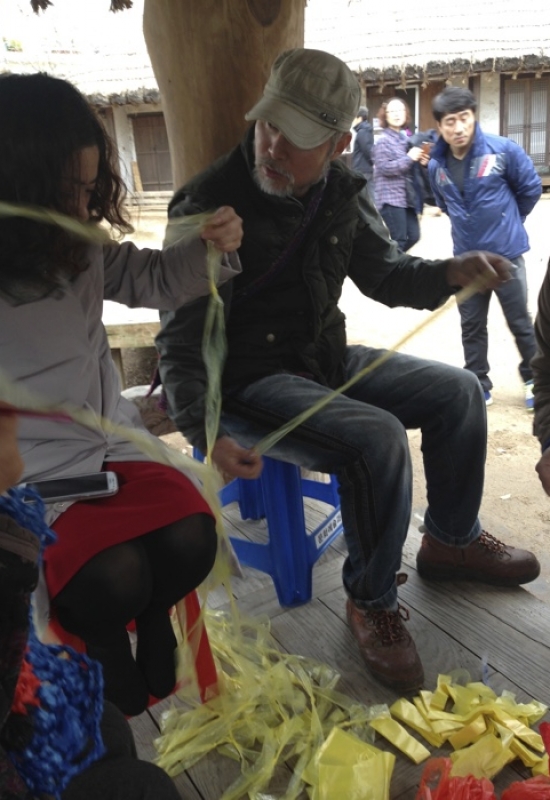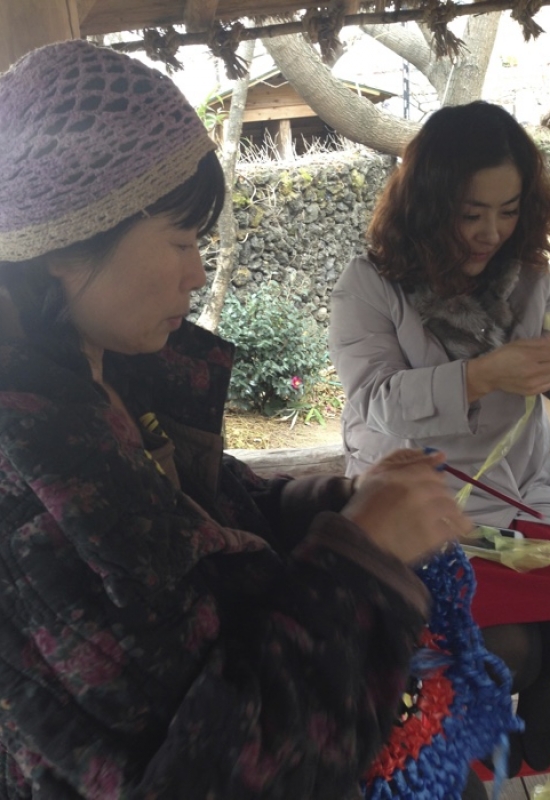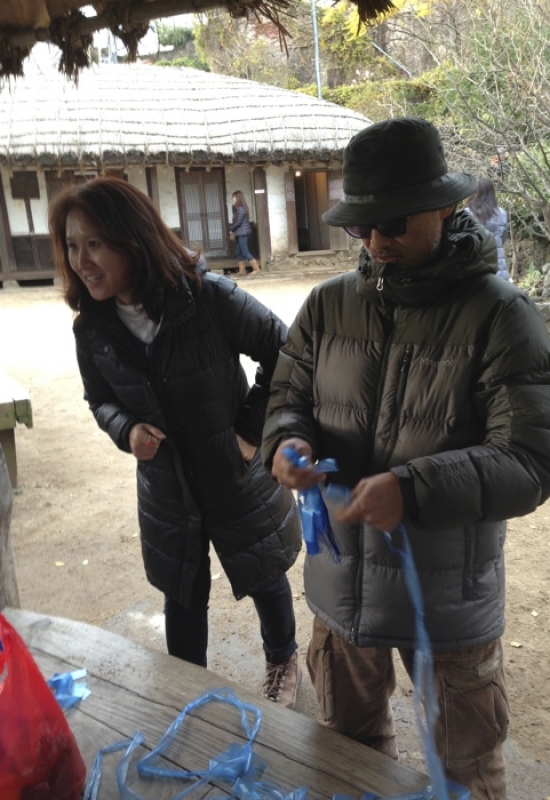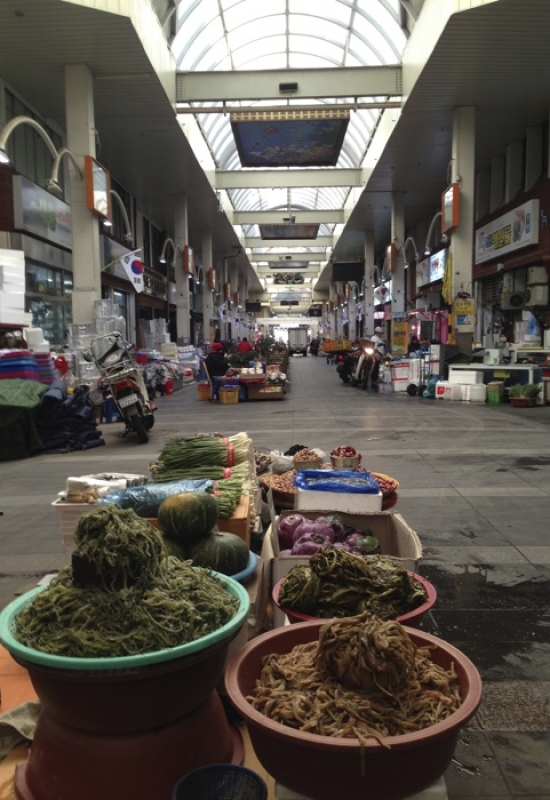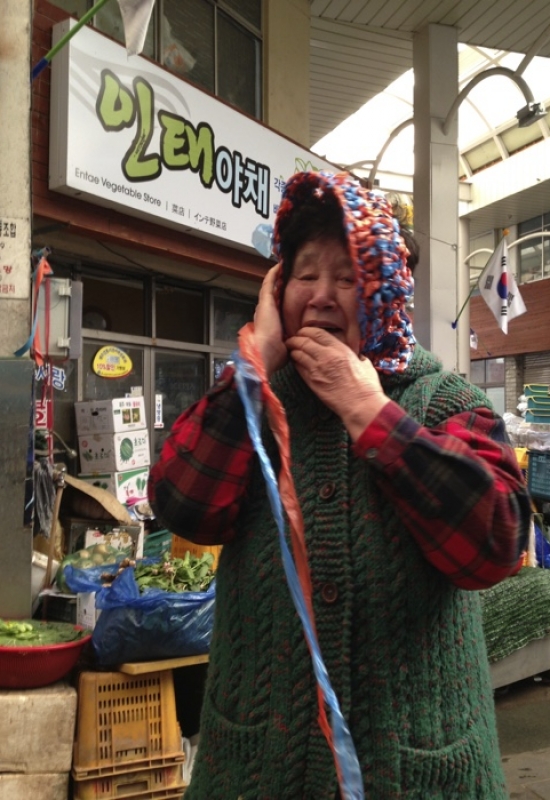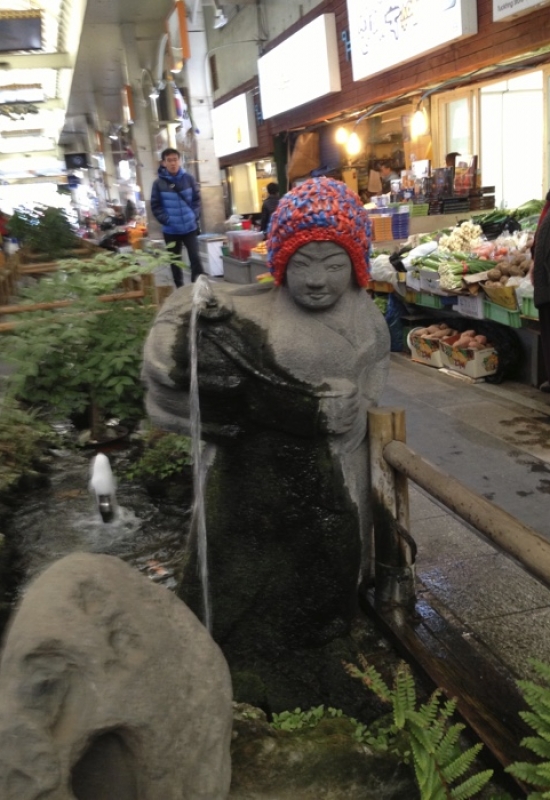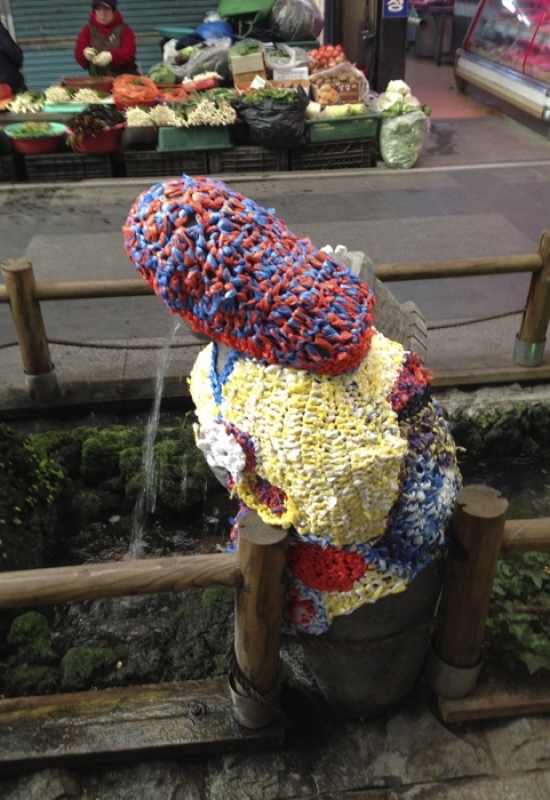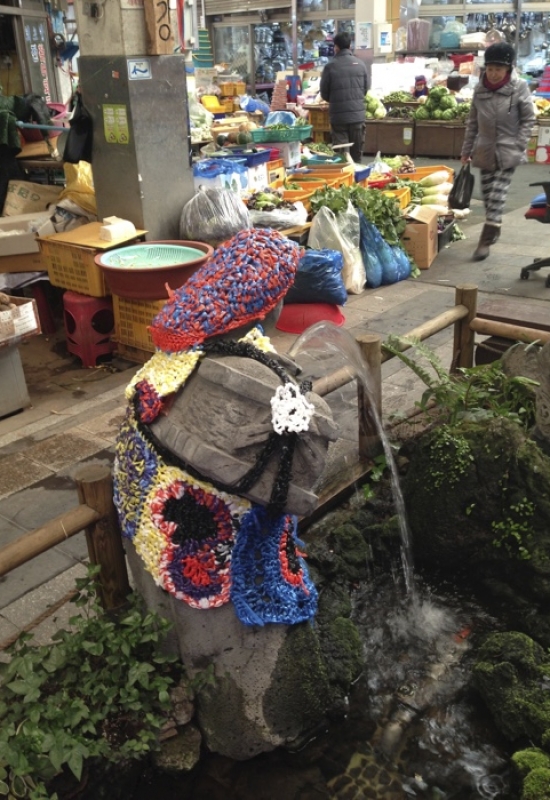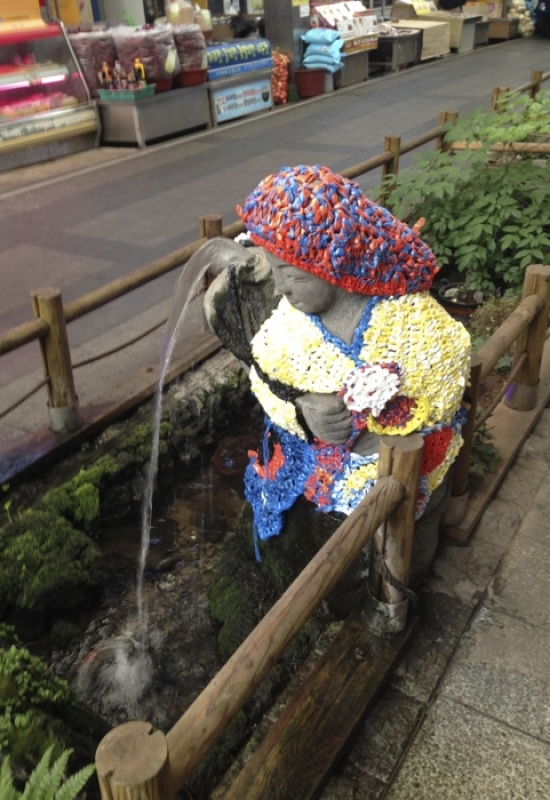A 3-day crochet intervention in the main market of the city of Seogwipo, Jeju Island, South Korea
| The material chosen for crocheting the dress was plastic bags, due to the fact that it would be exposed to water flowing out of the sculptures of the water carrier woman in the market. It was therefore first necessary to cut the bags into strips, knot them together, and roll them into balls. Wonderful that there were so many helping hands that joined in! |
 |
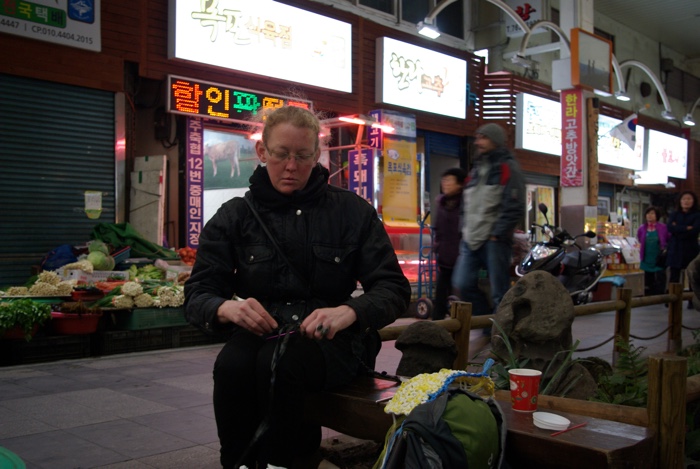
The preparation work was followed by three days of sitting and working in the market—an opportunity to feel the rhythms of life there and marvel at the women who work there day in and day out. The immediate neighbors were very kind, offering warm tea to drink and things to eat. One of them can be seen in the slide show below wearing the head covering crocheted for the sculpture. |
| The dress remained on the sculpture for well over a year. |
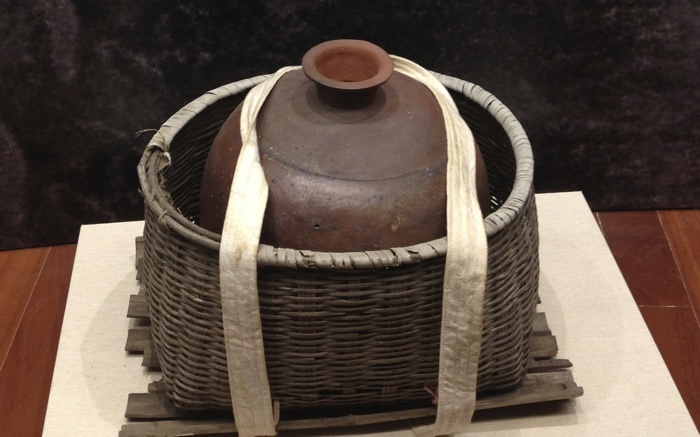 |
|
Heo-beok (water jars), as carried by the sculpture, were used in Jeju to carry potable water over long distances. Their narrow openings kept the water from spilling out and were easy to grab for transport. It was traditionally the job of women to go into the hills to collect fresh water from springs and bring it back to their homes. It was said to be bad luck to carry an empty heo-beok in front of men or into another person’s house. |

